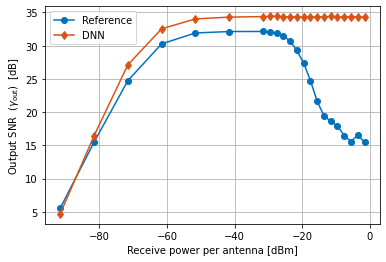- Panagiotis Skrimponis, NYU Tandon School of Engineering
- Mustafa F. Özkoç, NYU Tandon School of Engineering
Wireless communications over millimeter wave and terahertz frequency bands have attracted considerable attention for future cellular systems due to the abundantly available bandwidth. However, communications over these high frequencies are vulnerable to blockage, shadowing. Moreover, the high penetration loss in these frequencies degrades the system performance even further. To compensate for the harsh propagation characteristics, new antenna designs using large number of antennas are conceived. Combined with beamforming techniques, these new antenna designs can realize the full potential of these high frequencies. However, the received signal quality may significantly degrade due to hardware imperfections of the radio frequency front-end (RFFE) devices. Specifically, the limitations such as noise figure, non-linear distortion, and phase offsets introduced by the radio equipment can significantly deteriorate the system performance. The problem is exacerbated when the input power is too low or too high due to the limited range of ADC. The RFFE distortion can be represented as a non-linear function where the input is the original signal and output is the distorted signal which generally results in information loss. We make novel use of deep learning methods for function inverse problems, at the distortion mitigation step of the communication systems. Our results show, deep neural networks are promising tools to improve the communication quality in wireless networks suffering from RFFE distortions. We achieve up to 20dB increase in the SNR as compared to the baseline method.
The rest of our full report can be found here.
The dataset can be found here.
Our training code, including failed ones 💔, can be found here.
We provide the trained networks and the testing dataset in a colab notebook. We, also, committed this notebook in our github repository just so it would be here. However, please see the colab notebook here for the best formatting and acutal reproduction of the results.
If you just want to read our results please see the notebook written as a markdown here.
The performance of our DNN compared with the state of the art baseline. We observe a performance improvement up to 20 dB compared to the baseline. More importantly, our model significantly improves the performance specifically in the non-linear region.
